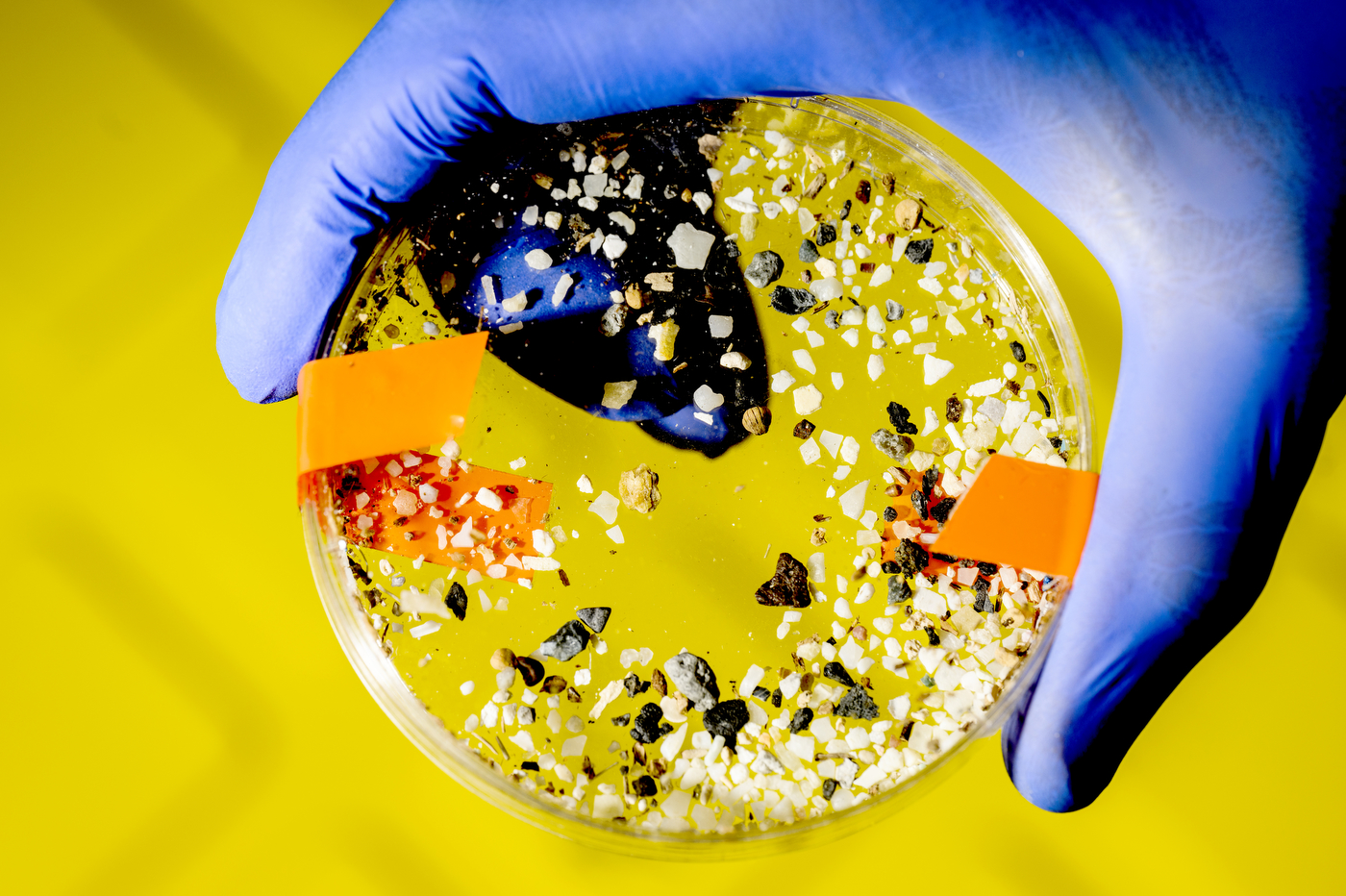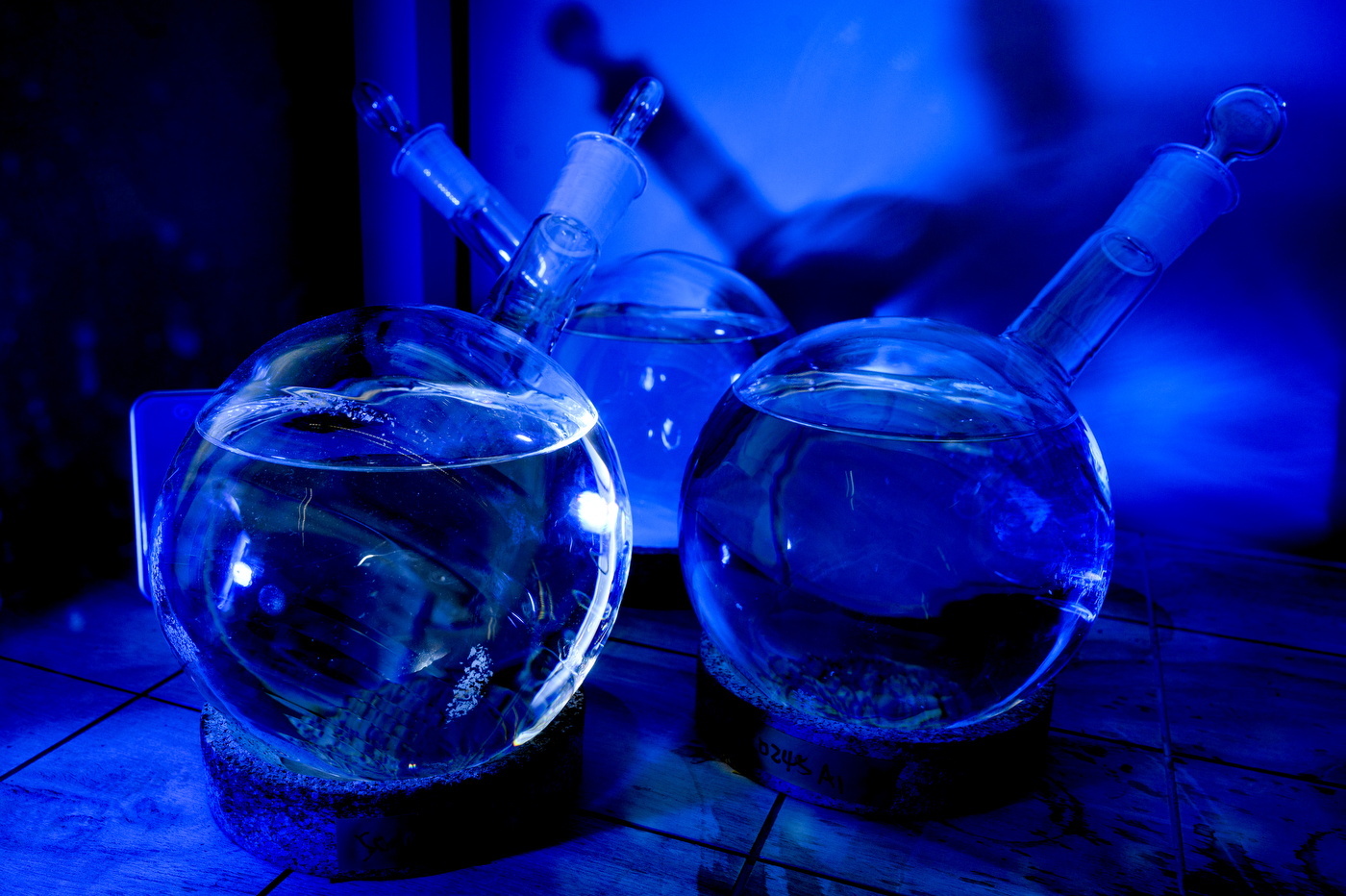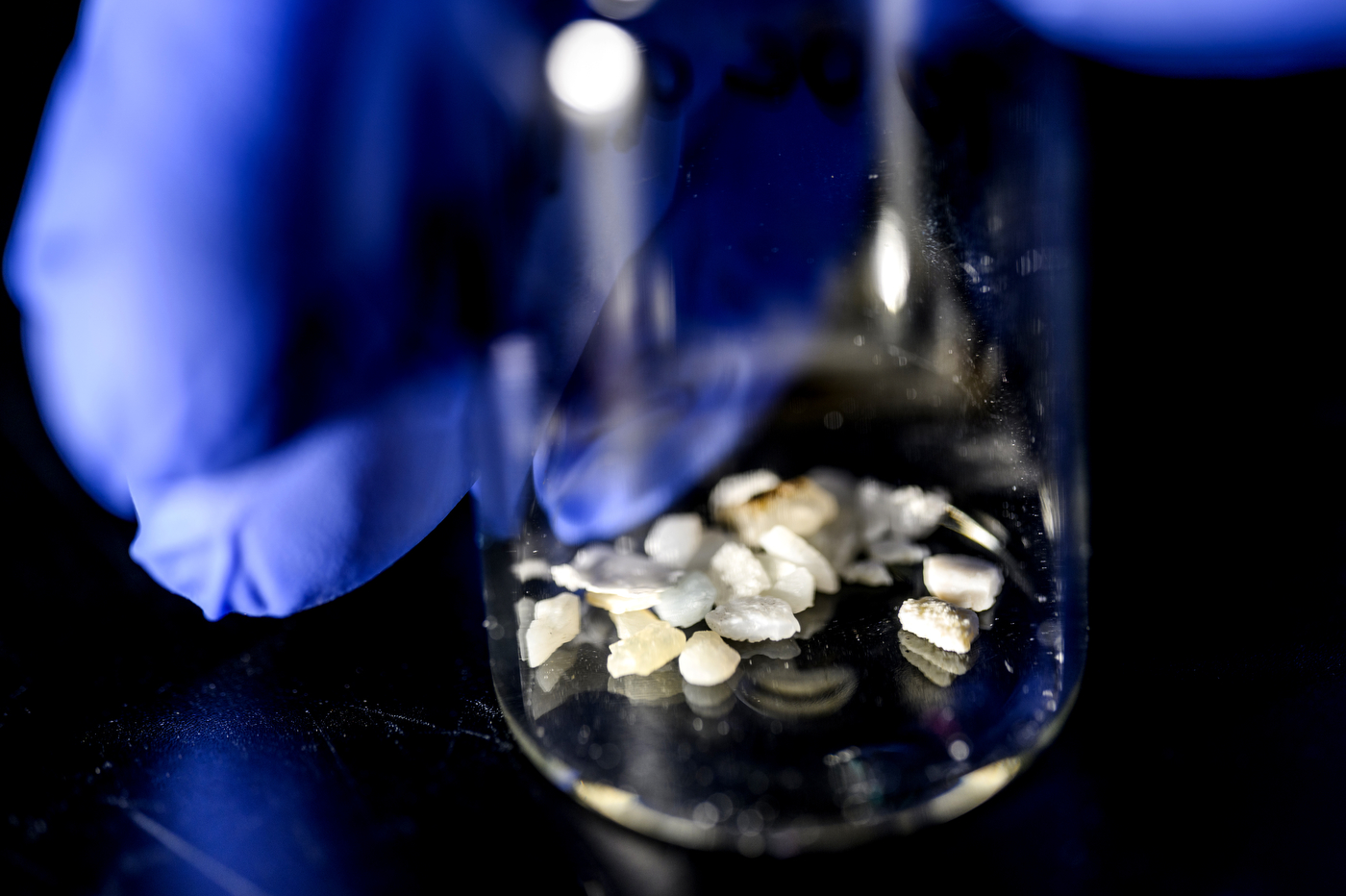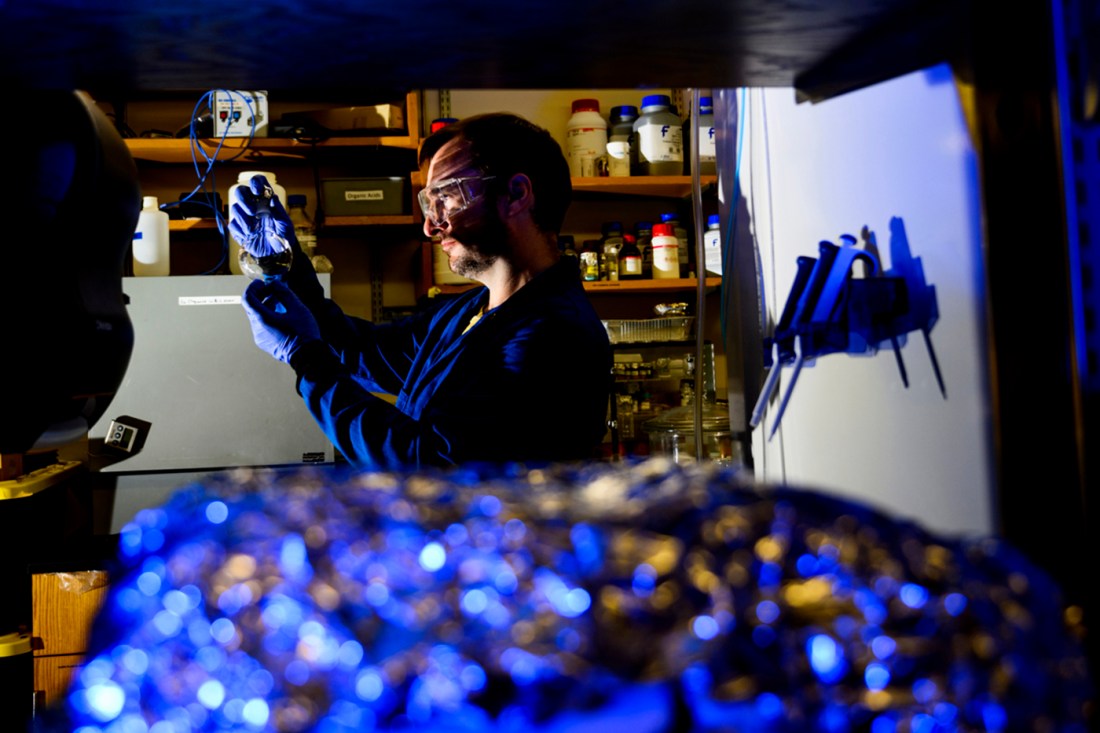What happens when sunlight breaks down plastics in the ocean? Potentially harmful chemical byproducts are left behind, research finds

Northeastern researchers found in 2021 that an estimated 4 million to 10 million tons of plastic carbon enter the ocean each year. Much of it ends up floating in subtropical currents.
Now, the researchers — led by Northeastern professor Aron Stubbins — have examined what happens when the plastics break down.
“We found that hundreds of chemicals are produced when plastics degrade in sunlight,” says Stubbins, professor of marine and environmental sciences, civil and environmental engineering, and chemistry and chemical biology at Northeastern. “This may have an impact on the ocean’s carbon cycle and marine chemistry as well as potential consequences for human health.”




Plastics are polymers formed from long chains of carbon that make them solid but also make them hydrophobic, or unable to be dissolved in water. Thus, they often end up floating in the ocean. Three plastics — polyethylene, polypropylene and expanded polystyrene — are particularly common marine sights; together making up roughly 70% of the plastics produced in the world.
Polyethylene and polypropylene are also particularly common in subtropical gyres where ocean currents cycle in a way that floating materials accumulate in a sort of patch. (Expanded polystyrene eventually becomes waterlogged and sinks, so it doesn’t usually make it past coastal waters, Stubbins notes).
And while we may hear of plastics lasting hundreds of years, that doesn’t mean plastics don’t degrade at all — particularly when exposed to intense ultraviolet rays from the sun beating down on the subtropical oceans.
So, Stubbins and post-doctoral fellow Lixin Zhu set out to find out what chemicals resulted from this photodegradation of polyethylene, polypropylene and expanded polystyrene.
To do so, they collected microplastic from the ocean and cut other, store-bought plastic containers such as a shampoo bottle and a food container, into 3 millimeter pieces. They sealed these in quartz jars (glass blocks out UV rays; which is why we don’t get sunburned from sitting in a window, Stubbins notes) half-filled with seawater that was collected from the South Atlantic.
The researchers then measured the amount of plastics and the chemistry of dissolved organic carbon in the jars.
Some of the samples were then placed in the dark and some in the light under what Stubbins described as a tanning bed. After two months, the researchers again measured the amount of plastics and chemistry of dissolved organic carbon in the jars.

They found that there was less plastic and more dissolved organic carbon in the jars kept under the light, indicating that sunlight had started to dissolve the plastics into new chemical products.
“The loss of plastics in sunlight is important as some people have suggested cleaning up the surface of the ocean to remove microplastics,” Stubbins says. “But this research suggests that if we were able to stop plastics being introduced into the ocean, then sunlight would remove smaller microplastics from surface waters within a few decades.
“However, we also need to know what happens to the chemicals produced by plastics in sunlight and that is why we also investigated the chemistry of the dissolved organic carbon — the molecular soup formed as plastics dissolve in seawater,” Stubbins continues.
Stubbins found 319 to 705 chemical products were formed from the plastics exposed to light.
The expanded polystyrene broke down and produced “a higher diversity of chemicals” than the polyethylene and polypropylene.
“Once you photodegrade them — especially, polystyrene — the chemicals can recombine and produce hundreds of different chemicals,” Stubbins says.
And Stubbins says these additional chemicals from plastics may be having an impact.
First, they may be altering the marine environment’s chemistry, particularly the composition of a “microlayer” on the surface of the world’s oceans that play an important role in the exchange of material — including aerosols, chemicals and trace gases — between the atmosphere and the ocean.
“The microlayer covers the whole ocean, which represents 70% of the Earth’s surface,” Stubbins notes. “If you alter the chemistry of that layer, you’re altering the barrier between sea and air, and altering the exchange of material including climate-active gases.”
Secondly, while many of the dissolved chemicals produced by degrading plastics are consumed by microorganisms, some are not and, in fact, may inhibit bacterial growth.
“It could be altering microbial ecology,” Stubbins says.
Examining both of these potential impacts are some of the next steps in the research. Moreover, the researchers are studying some of the individual chemicals produced and the rates of chemical reactions that are occurring as the plastics degrade.
Meanwhile, the polypropylene and polyethylene produced dissolved fatty acids “resembling the parent material,” Stubbins says. But these chemicals can be used as food by microorganisms in the ocean.
“Today we know that plastics are everywhere on Earth, and understanding how they move around the planet and how they break down is important if you want to understand how we and other organisms are exposed to them,” Stubbins says.
Cyrus Moulton is a Northeastern Global News reporter. Email him at c.moulton@northeastern.edu. Follow him on X/Twitter @MoultonCyrus.






